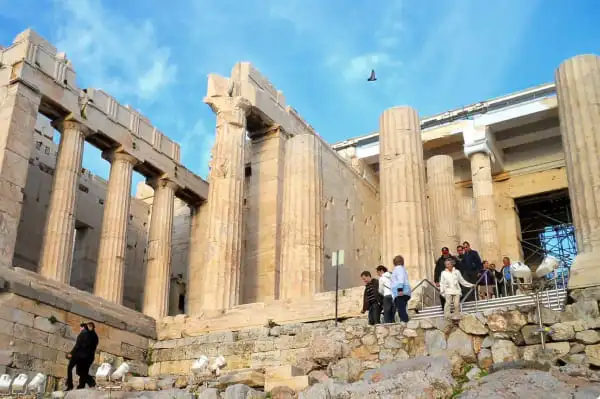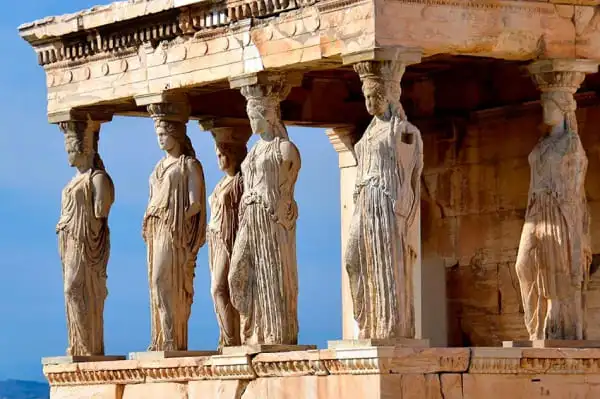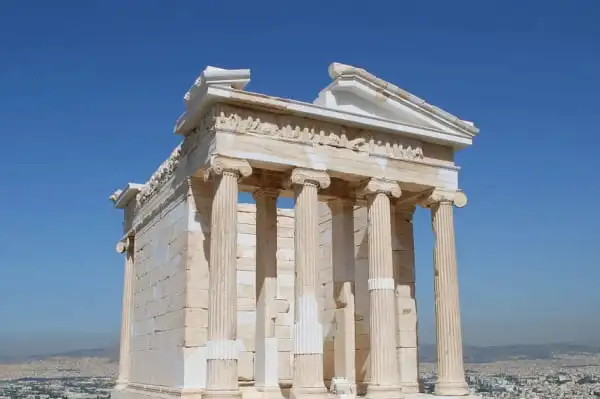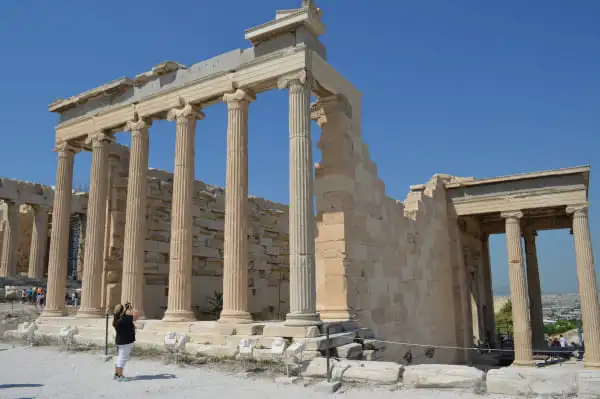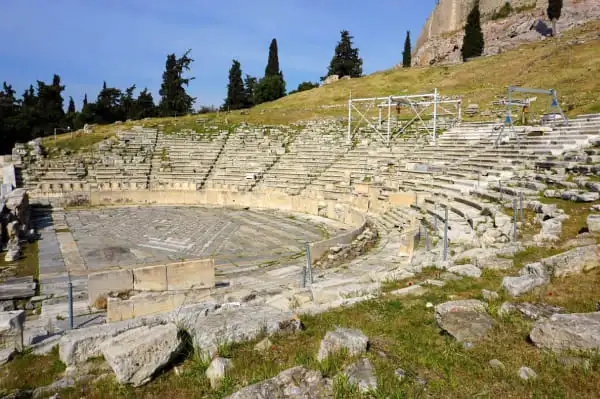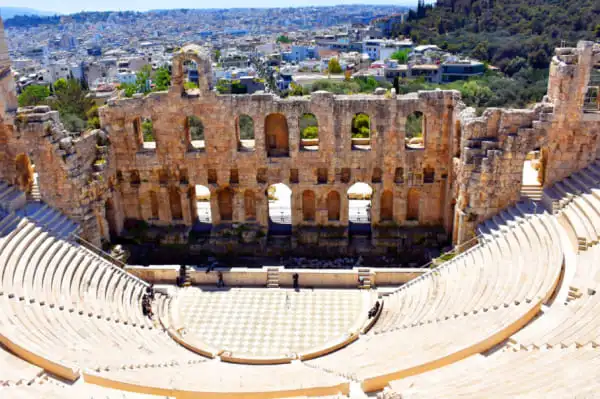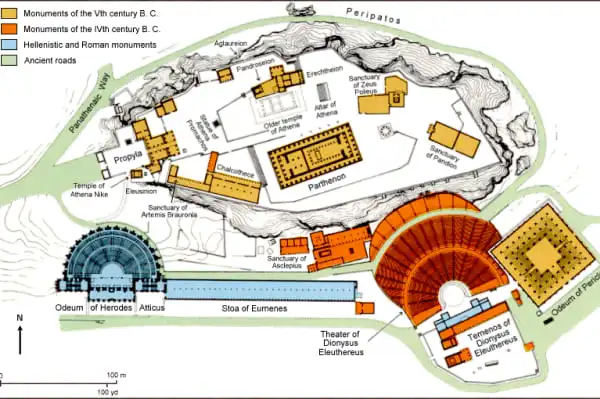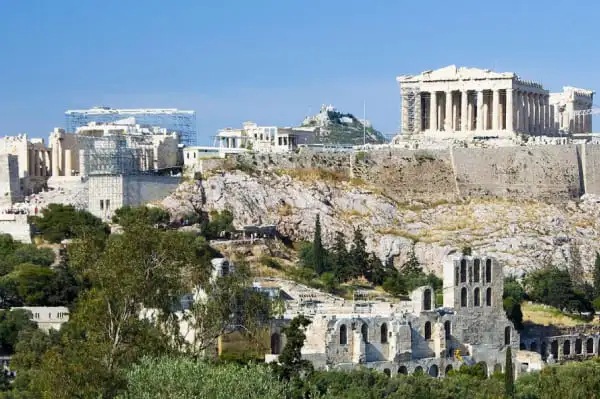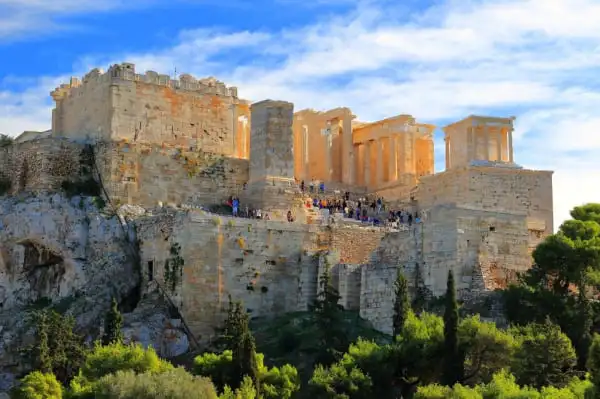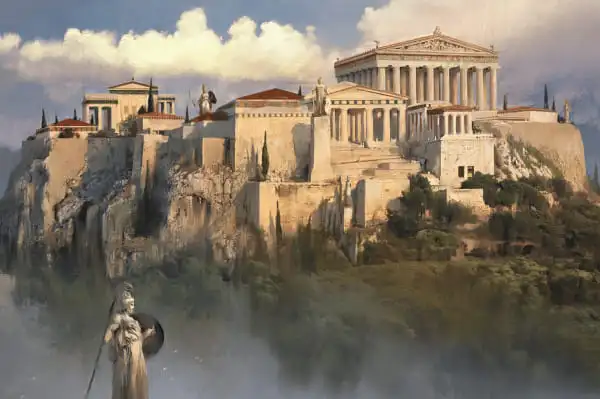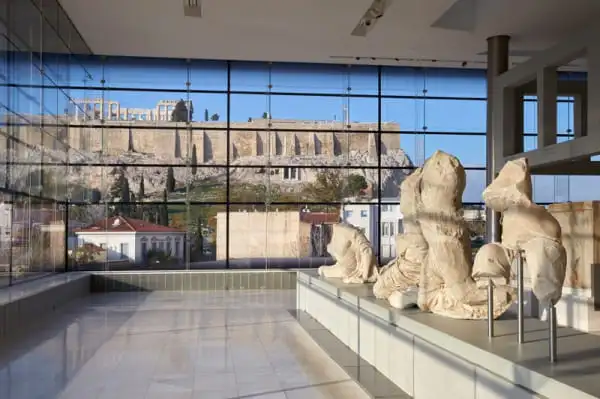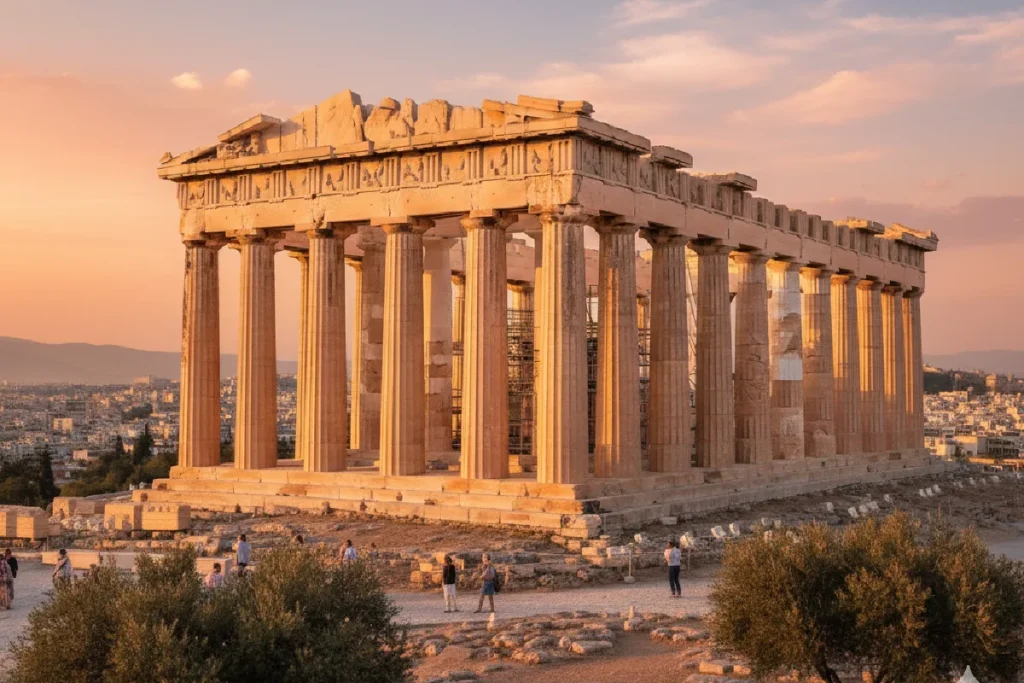The Acropolis of Athens, Greece
The Acropolis is the most famous and historical citadel of Athens, as well as a symbol of Greek civilization. Below, we will explore the monuments that make up this site.
Visit Information
What is the Acropolis?
The Acropolis of Athens is the most famous ancient citadel in the world, whose name means “High City”. It is a rocky hill that rises 156 meters above the city, historically serving as a defensive fortress and, crucially, as the main religious sanctuary of the polis. Its peak came in the 5th century B.C., the “Golden Age” of Athens, under the leadership of Pericles. After being destroyed by the Persians in 480 B.C., it was rebuilt as an ambitious symbol of the power, wealth, and victory of Athenian democracy. This architectural program resulted in a series of masterpieces that defined classical art.
Today, the Acropolis is the most powerful symbol of Greek civilization, democracy, and the foundations of Western culture. For this reason, in 1987, the Acropolis of Athens was declared a UNESCO World Heritage Site due to its invaluable worth as a universal symbol of Greek culture and civilization.
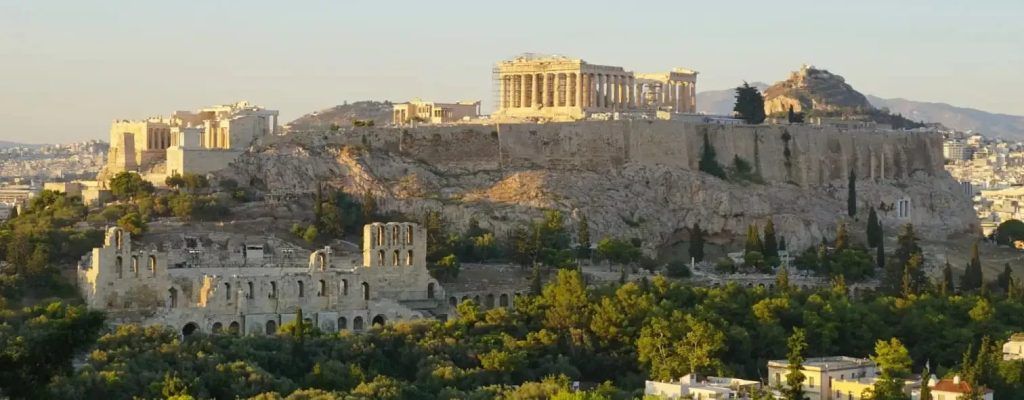
What is on the Acropolis of Athens?
If you are wondering what is on the Acropolis of Athens, or what you can find in it when you visit, the main monument is the Parthenon, dedicated to the goddess Athena Parthenos, a jewel of Doric architecture known for its optical illusions used to achieve visual perfection. Other key buildings include the Propylaea (the monumental gateway), the Erechtheion (famous for its Caryatids), and the Temple of Athena Nike.
While the buildings are massive, don’t overlook the artistic details: learning about the statues of the Acropolis will give you a much better context of what you are seeing.
Here is a list of everything you have to see if you book a ticket for the Acropolis:
The Parthenon: Symbol of Doric Perfection
The Parthenon dominates the Acropolis as its most iconic structure, built between 447-432 BCE under the supervision of architects Ictinus and Callicrates. This masterpiece of Doric architecture was dedicated to Athena Parthenos and originally housed a colossal gold and ivory statue of the goddess created by Phidias.
What makes the Parthenon truly extraordinary are its optical illusions and mathematical precision, the columns lean slightly inward, the stylobate curves upward, and the corner columns are thicker, all designed to counteract visual distortions and create perfect proportions when viewed from below.
SITE MONUMENTS
The Parthenon is an iconic symbol of ancient Greek civilization and a masterpiece of classi…
SITE MONUMENTS
A monumental entranceway that was built in the fifth century BC, during the height of A…
The Propylaea: Mnesicles' Monumental Gateway
The Propylaea serves as the grand entrance to the Acropolis, designed by Mnesicles and constructed between 437-432 BCE.
This imposing gateway combines Doric and Ionic architectural elements, creating a dramatic transition from the secular world below to the sacred space above. The structure features five passageways of varying widths, with the central passage reserved for processions and wheeled traffic, while the side passages accommodated pedestrians during the Panathenaic festivals.
The Erechtheion and the Enigmatic Caryatid Porch
The Erechtheion, completed around 406 BCE, represents the most architecturally complex building on the Acropolis due to its irregular shape and multiple sacred functions.
The temple’s most famous feature is the Porch of the Caryatids, where six elegant female figures serve as columns supporting the roof. These masterfully carved maidens, each standing 2.3 meters tall, are positioned with their weight distributed in contrapposto stance, creating both structural stability and artistic beauty. The originals are now preserved in the Acropolis Museum, while faithful replicas stand on the site.
SITE MONUMENTS
On the northern side of Athens’ Acropolis stands the ancient Greek temple known as the E…
SITE MONUMENTS
On Athens’ Acropolis, there is a stunning and well-known ancient Greek temple called…
The Temple of Athena Nike
Perched on the southwestern edge of the Acropolis, the Temple of Athena Nike is a small but perfectly proportioned Ionic temple built around 427-424 BCE.
Despite its modest size, measuring just 8 by 5.5 meters, this temple played a crucial role in Athenian religious life, dedicated to Athena as the goddess of victory. The temple’s frieze depicts scenes from the Battle of Plataea, celebrating Athens’ triumph over the Persians, while its strategic position offers visitors some of the most spectacular panoramic views of modern Athens and the surrounding Attica region.
Old Temple of Athena
The Old Temple of Athena (Archaios Naos) represents the most ancient sacred structure on the Acropolis, predating the Parthenon by nearly a century. Built around 525-500 BCE during the Archaic period, this temple served as the primary sanctuary of Athena Polias, the city’s patron goddess, housing the sacred olivewood statue of Athena that was believed to have fallen from heaven.
Although largely destroyed during the Persian invasion of 480 BCE and now represented only by scattered marble blocks and foundation stones, archaeological evidence reveals it was a Doric peripteral temple with six columns on the short sides and twelve on the long sides.
SITE MONUMENTS
Acropolis’s other ancient monument, the Old Temple of Athena also known…
SITE MONUMENTS
The Theater of Dionysus is one of the most important archaeological sites in Athens, Greece…
The Theatre of Dionysus
Located on the southern slope of the Acropolis, the Theatre of Dionysus holds the distinction of being the world’s first theater and the birthplace of dramatic art as we know it.
Originally constructed in the 6th century BCE and extensively renovated during the 4th century BCE, this ancient venue could accommodate up to 17,000 spectators across its semicircular stone seating arrangement. Here, the masterpieces of Aeschylus, Sophocles, Euripides, and Aristophanes premiered during the annual Dionysia festival, establishing the foundations of Western theater.
The theater’s remarkable acoustics, achieved through its precise geometric design, allowed even whispered words from the orchestra to reach the highest seats, a testament to ancient Greek engineering prowess that continues to amaze visitors today.
Odeon of Herodes Atticus
The Odeon of Herodes Atticus, built in 161 CE by the wealthy Athenian benefactor of the same name as a memorial to his wife, represents a stunning example of Roman architectural influence on the Acropolis complex.
This impressive stone theater, nestled into the southwestern slope of the Acropolis hill, originally featured a distinctive cedar wood roof and could seat approximately 5,000 spectators across its three-tiered seating arrangement.
Unlike its ancient neighbor, the Theatre of Dionysus, the Odeon was designed primarily for musical performances and recitations rather than dramatic productions.
Today, after extensive restoration in the 1950s, it serves as one of Europe’s most atmospheric concert venues, hosting the annual Athens Festival and attracting world-renowned artists who perform against the magnificent backdrop of the illuminated Acropolis monuments.
SITE MONUMENTS
The Odeon of Herodes Atticus is a beautifully preserved Roman-era amphitheater located…
Tips for your visit to the Acropolis of Athens
Visiting the Acropolis of Athens requires good planning to enjoy the experience to the fullest. Here are some essential tips for your trip to the top of the city:
Avoid heat and crowds
For the best experience, visit first thing in the morning (8:00 a.m.) or late in the afternoon. When the site opens, the weather is cooler, and you can enjoy the monuments before large tourist groups arrive. If traveling in summer, strictly avoid midday hours (10:00 a.m. to 2:00 p.m.), as this is when temperatures are highest and crowds are at their maximum. Planning your visit for sunset also provides spectacular light for photos!
Buy your tickets in advance
Buy your tickets in advance and online to skip the ticket office queue, which can be very long during high season. Furthermore, instead of using the crowded main entrance, opt for the South/Southeast entrance (located near the Theatre of Dionysus). This secondary entrance usually has less traffic and allows for quicker access to the site.
Wear comfortable shoes
The Acropolis is built on rock and ancient marble. For your safety and comfort, it is essential to wear closed, comfortable footwear with a good non-slip sole. The ground can be extremely slippery and uneven.
Sun protection and hydration essentials
Since the Acropolis hill offers very little natural shade, it is crucial to protect yourself from the Mediterranean sun. Be sure to apply sunscreen generously, wear a hat or cap, and use sunglasses. Additionally, maintain your hydration by bringing a reusable water bottle (you will find designated spots within the complex where you can safely refill it).
Traveler information
The Acropolis of Athens is Greece’s most popular tourist destination. The Parthenon, the Erechtheion, and the Propylaia are just a few of the…
The Acropolis has played a significant role in Greek history and culture and is widely regarded as one of the most important archaeological…
In the heart of Athens, Greece, on a rocky outcrop, stands the Acropolis, a well-known ancient landmark. The hill, standing at 156 meters high…
Taking the metro is a quick and convenient option for getting to the Acropolis in Athens. There are two metro stations that can be used to re…
While visiting the Acropolis in Athens is a must-see experience for anyone interested in ancient Greek history and culture, not visiting the…
Beat the crowds and scorching heat with Acropolis Skip the Line tickets. No more waiting in queues under the Greek sun….
More information about the Acropolis
The Acropolis of Athens is a testament to the rich history and culture of Greece and Western civilization. Over the centuries…
The Acropolis Museum is a modern museum located in Athens, Greece, which serves as a beacon for the preservation and…
This October 2025, Athens is witnessing a significant event: the Parthenon stands completely free of scaffolding for the first time in two centuries…


